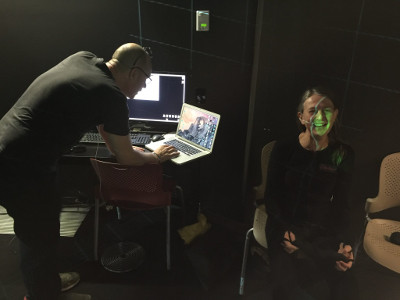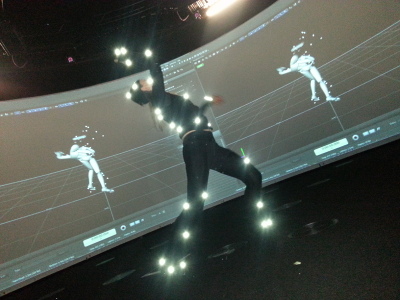Living Data
Research/
Track changes
Disclaimers, Copyrights and Citations
Index
2015
2016
2017
2018 (In progress)
Combining subjective responses and collective knowledge
What role does gesture play in growing and sharing knowledge?
Track Changes is independent research that builds on the PhD study, Antarctic Animation: Gestures and lines describe a changing environment(UNSW 2010) that identified gestures as essential components of accurate communication. This report reflects interactions between scientists, artists, and specialists in other fields, and how gestures may expand understanding through interactions between people and environments. Methods and outcomes are freely shared with permission from participants. See Disclaimers, Copyrights and Citations. For more information please contact me, Lisa Roberts.
What does sharing and growing knowledge look like?
Indigenous Canadian scholar and story teller, Dr Shawn Wilsonasks, "What does sharing and growing Indigenous knowledge look like?" He explains this process in an Email and asks if I can make an animation to more fully engage his audiences. After a long phone conversation I read the digital presentation file he sends, that includes words spiralling out from the centre of a screen. Two things stand out from our conversation. Firstly, that knowledge itself has agency through art and science. Secondly, that the context in which knowledge reaches us is a vital component in fully understanding. I interpret this to mean that knowledge is embodied in the land and ocean, and all the living things (including us) that these sustain, and that context is direct experience that provides pre-verbal depths of meaning (that inspire art and science). I get a sense of movement from Shawn's written words, and their spatial arrangement on the screen. I read and reflect on the words many times and then animate my sense of that movement of words and their meanings. The animation reflects my interactions with Shawn, my sense of what his words convey, of knowledge growing through relationships between us and other entities. I used Adobe Flash animation software and a Wacom drawing tablet and stylus to create it. As I write these lines I see my relationship with Shawn within the context of Track Changes research, and our research paths expanding as they cross-fertilise.
Tuesday 12 January 2016. Newtown, Sydney
Growing and sharing knowledge
Concept: Dr Shawn Wilson
Animation: Lisa Roberts
Dr Andrew Davidson is a marine microbial ecologist and world expert on phytoplankton. From his office at the Australian Antarctic Division he explains how "phytoplankton participate in all the processes that set our planetary chemistry and keep our ecology running". What do gestures add to his story?
Friday 14 August 2015. Kingston, Tasmania
Scientist: Andrew Davidson
Artist: Lisa Roberts
Recording: Lisa Roberts
TRANSCRIPT
Australian Antarctic Division
14 August 2015
Andrew Davidson explains:
So... the organisms I work with are... they have a value in their own right...
they are... as individuals they... can do some extraordinary things...
but really the most important roles they play are...
are when they are involved in... linking processes...
so... the contribution that they make to...
trophic levels...
you start off with small stuff that get eaten... by bigger stuff...
that transfers all the way through... to whales and seals and penguins...
and that sort of thing...
that goes from... from phytoplankton to... particulate matter...
that sinks out of the water...
it produces...
things like dimethyl sulphide...
which are a gas that goes into the atmosphere...
and forms clouds...
really the importance of these organisms...
they're beautiful in their own right...
as you know...
I'm sure you've seen some of them...
their primary importance is in fact...
in the way in which they participate...
in all the processes...
that actually set...
our planetary chemistry... and...
keep our ecology running...
and all those sorts of things...
Dr Andrew Davidson,Australian Antarctic Division, 2015
Gestures of hands and eyes are hand-trace with a stilus on a Wacom drawing tablet, and using Adobe Flash animation software.
Wednesday 23 December 2015. Newtown, Sydney
Gestures: Andrew Davidson
Tracing/animation: Lisa Roberts
What do gestures convey?
Research on non-verbal communication indicates that human interaction is grounded in subtle but powerful physical behaviours, some of which are so subtle that they can only be perceived in very painstaking, frame-by-frame analysis of films. Yet all of us are able to perceive these physical signs intuitively, in that they create the complex felt sense we have of another person. A shift in relationship may not be seen but it will be felt, either positively or negatively.
Carol-Lynne Moore (1982)
Hand-traced digital drawings are made to objectively record gestures. Drawings are made with pencil on paper as subjective responses to the gestures and can serve as a form of active listening.
What do gestures tell us? How can we identify differences between the original and drawn gestures? What gestures are embodied in drawn responses? In 1928 by Rudolf Laban, the Hungarian teacher and movement researcher, invented a notation system (Labanotation) to quantify a body's use of time, space and energy (Moore. 1982.p.34). Laban's pioneering work has led to greater clarity in language used to describe movement, and for archiving choreographies for future generations. His methods are also used to identify congruence between our words and gestures. Movement analysis can be used to identify tension between the scientific and artistic aspects of our human nature (cognitive dissonance).
To be continued ...
Left: Jason Benedek and Lisa Roberts in the UTS Data Arena. Photo: William Gladstone
Right: Jason motion-captures Lisa's improvised seagrass movement. Photo: Jason Benedek
Below: William Gladstone video records the motion capture process. Music: Robbie Long













